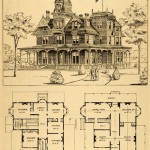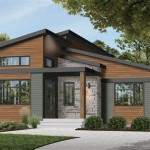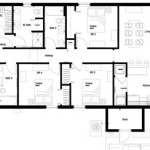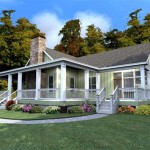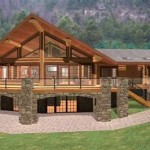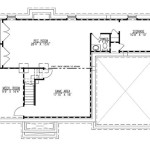House Plans With a Basement: Expanding Living Space and Value
House plans with basements offer a versatile approach to home design, providing homeowners with additional space for various purposes. Beyond simply serving as storage areas, basements can be transformed into living quarters, recreational zones, or functional work spaces, significantly increasing the value and usability of a home. Understanding the various types of basement plans, construction considerations, and potential design options is crucial for maximizing the benefits of this often-underutilized space.
The inclusion of a basement in a house plan necessitates a careful understanding of soil conditions, water table levels, and local building codes. Proper planning and execution are essential to ensure a dry, structurally sound, and well-ventilated basement that enhances the overall quality of life for the occupants. Furthermore, cost considerations and long-term maintenance requirements should be factored into the decision-making process.
Types of Basement House Plans
Several distinct types of basements can be incorporated into house plans, each offering unique advantages and disadvantages depending on the site conditions, budget constraints, and intended usage. The three primary types are full basements, partial basements, and walk-out basements.
Full Basements: A full basement extends beneath the entire footprint of the house. This design maximizes the potential for additional living space. Full basements typically offer the most cost-effective square footage expansion since the foundation is already in place. They are suitable for a wide range of uses, from storage and utilities to recreation rooms, home theaters, and even additional bedrooms and bathrooms, subject to local regulations regarding egress windows and other safety requirements. The cost of finishing a full basement is generally less than adding an equivalent amount of space above ground.
Partial Basements: As the name suggests, a partial basement covers only a portion of the house's foundation. This design is often chosen to accommodate specific needs, such as a utility room, a storm shelter, or a small storage area. Partial basements are often more economical than full basements due to the reduced excavation and foundation work required. However, they offer less flexibility in terms of usable space. The placement of a partial basement is crucial to ensure easy access and functionality. Consideration should be given to its proximity to utilities and areas where storage is most needed.
Walk-Out Basements: A walk-out basement is constructed on a sloping lot where one or more sides of the basement are exposed at ground level. This design allows for direct access to the outdoors through a door or sliding glass door, effectively creating a ground-floor entrance. Walk-out basements offer the most natural light and ventilation compared to other basement types. They are ideal for creating in-law suites, home offices, or recreational areas with easy access to a backyard patio or garden. The exposed wall(s) of a walk-out basement can be finished with standard siding or brick, seamlessly integrating it with the rest of the house.
Key Considerations for Basement Construction
Constructing a basement requires careful attention to several critical factors to ensure its structural integrity and long-term usability. These considerations include site evaluation, waterproofing, climate control, and egress.
Site Evaluation: Before embarking on basement construction, a thorough site evaluation is essential. This involves assessing soil conditions, water table levels, and potential drainage issues. Poor soil stability can lead to foundation settlement and cracking, while a high water table can cause water seepage and mold growth. Geotechnical testing can provide valuable insights into soil composition and bearing capacity. Proper drainage systems, such as French drains and sump pumps, are often necessary to divert water away from the foundation. The slope of the land also plays a role in determining the feasibility and cost-effectiveness of different basement types.
Waterproofing: Preventing water intrusion is paramount in basement construction. Effective waterproofing measures include applying a waterproof membrane to the exterior of the foundation walls, installing drainage boards to channel water away, and ensuring proper grading around the house to promote water runoff. Interior waterproofing systems, such as sealants and vapor barriers, can also provide an additional layer of protection. Regularly inspecting and maintaining the waterproofing system is crucial for preventing long-term water damage.
Climate Control: Due to their underground location, basements are often prone to dampness and temperature fluctuations. Proper insulation and ventilation are essential for maintaining a comfortable and healthy environment. Insulating the foundation walls and floor helps to regulate temperature and reduce energy costs. Installing a dehumidifier can help to control moisture levels and prevent mold growth. Adequate ventilation is also necessary to circulate fresh air and remove stale air. Consider installing a heating and cooling system specifically designed for basements to ensure optimal climate control.
Egress: Egress refers to the ability to safely exit a basement in the event of an emergency. Building codes typically require basements used as living spaces to have at least one means of egress, such as an egress window or a walk-out door. Egress windows must meet specific size and accessibility requirements to allow for easy escape. Window wells may be necessary to provide adequate clearance and prevent soil from collapsing around the window. Ensuring proper egress is crucial for the safety and well-being of the occupants. Furthermore, installing smoke detectors and carbon monoxide detectors is essential for alerting occupants to potential hazards.
Design Options and Functionality
The design options for basements are virtually limitless, allowing homeowners to customize the space to meet their specific needs and preferences. From cozy family rooms to state-of-the-art home theaters, basements can be transformed into a variety of functional spaces.
Recreational Areas: Basements are often ideal for creating recreational areas, such as game rooms, home gyms, or children's playrooms. The expansive space allows for the installation of equipment like pool tables, ping pong tables, and exercise machines. Soundproofing the walls and ceiling can help to minimize noise transmission to the upper floors. Consider adding a wet bar or kitchenette for added convenience.
Home Theaters: A basement can be transformed into a dedicated home theater with the installation of a large screen, surround sound system, and comfortable seating. Minimizing natural light and controlling acoustics are essential for creating an immersive viewing experience. Consider incorporating features like a projector, a soundproofed room, and tiered seating for optimal enjoyment.
In-Law Suites: Walk-out basements are particularly well-suited for creating in-law suites or rental apartments. These spaces typically include a bedroom, bathroom, living area, and kitchenette, providing independent living quarters for family members or tenants. Ensuring separate entrances and utility meters can enhance privacy and independence.
Home Offices: With the increasing prevalence of remote work, basements are becoming popular locations for home offices. The quiet and secluded environment can provide a distraction-free workspace. Adequate lighting, ventilation, and electrical outlets are essential for creating a productive office environment. Consider adding built-in shelving and storage to maximize organization and efficiency.
Storage Solutions: Even if the primary purpose of a basement is storage, careful planning and organization are essential for maximizing its usability. Installing shelving units, cabinets, and storage containers can help to keep items organized and easily accessible. Consider designating specific areas for different types of items, such as holiday decorations, seasonal clothing, and tools.
In addition to the above, specific architectural considerations can greatly improve the basement’s appeal. Incorporating elements that mitigate the feeling of being underground, such as strategically placed lighting fixtures, lighter paint colors, and above grade windows, can make the space feel less confined. Maximizing natural light where possible through window wells and light tubes can also make a significant difference. Open floor plans can create a more spacious feeling, especially in smaller basements. Proper ventilation is essential to prevent moisture buildup, which can lead to mold growth and discomfort. Investing in high-quality flooring materials designed for basements can prevent moisture damage and provide added comfort. Ultimately, a well-designed basement can significantly enhance the overall value and livability of a home.
The decision to include a basement in a house plan is a significant one, requiring careful consideration of numerous factors. Thorough planning, proper construction techniques, and thoughtful design choices are crucial for creating a functional and valuable space that enhances the overall quality of life for the occupants.

Simple House Floor Plans 3 Bedroom 1 Story With Basement Home Design 1661 Sf Basementdesignflo One New

House Plans With Basements Dfd Blog

Versatile Spacious House Plans With Basements Houseplans Blog Com

Stylish And Smart 2 Story House Plans With Basements Houseplans Blog Com

Basement House Plans Next Level Homes

Photos Of Plan 1117 The Clarkson Basement Floor Plans House

Hillside House Plan Modern Daylight Home Design With Basement

Don Gardner Walkout Basement House Plans Blog Eplans Com

Small Cottage Plan With Walkout Basement Floor

Extend Your Homes Living Space With A Basement Floor Plan

